ADHD and the Speech-Language Pathologist: Accommodations, Integrations, and Collaborations
Please enter a valid quantity
Please select a product format
That product is out of stock
You have added this item to your cart.
ADHD and the Speech-Language Pathologist: Accommodations, Integrations, and Collaborations
Already an ASHA Learning Pass subscriber?
Login
The purpose of this SIG 1 activity is to shed light on the speech-language pathologist’s
role with regard to students who have developmental language disorder (DLD) and
attention-deficit/hyperactivity disorder (ADHD), as well as to help clinicians understand
the importance and recognize the complexity of incorporating interdisciplinary
collaboration, multilingual and neurodiverse perspectives, and best practice guidelines
into assessment and intervention. In the first article, the authors conduct a retrospective
review to identify the behavioral features that exist together and outside of the diagnoses
of DLD and ADHD, while also reviewing the severity and impact that DLD has on the
behavioral symptoms of ADHD. The second article discusses the importance of
collaboration with psychologists for treatment of students with DLD and/or ADHD and
lays out the best practice guidelines for addressing social communication, selfregulation,
and self-advocacy. The third article provides a tutorial with strategies for how
to adapt therapeutic approaches based on the cognitive profile interpretations of children
with DLD and ADHD. The final article revisits the assessment of students with comorbid
diagnoses of DLD and ADHD and adds the additional and complicated element of
multilingual students, which is a group of students who have not been well represented
and researched.
Learning
Outcomes
You will be able to:
- describe related symptoms and problems that warrant language testing for
children who have ADHD
- name 1-2 intervention recommendations addressing social communication,
self-regulation, and/or self-advocacy that could be implemented in your
therapy setting for students with DLD and ADHD
- summarize ways to adapt therapeutic sessions to best meet the needs of
students who have comorbid diagnoses of ADHD
- explain why additional focus and research is needed for the population of
multilingual students with DLD who have comorbid ADHD
Assessment
Type
Self-assessment—Think
about what you learned and report on the Completion Form how you will use your
new knowledge.
Articles
in This Course
- The Impacts of Co-Occurring Developmental Language Disorder on the Academic,
Interpersonal, and Behavioral Profiles of Children With Attention-Deficit/Hyperactivity
Disorder by Kirsten M. Hannig Russell and Sean M. Redmond,
published in SIG 1, Volume 10, Issue 1, February 2025
- Best Practices for Supporting Social–Emotional Development in Children With
Developmental Language Disorder and Attention-Deficit/Hyperactivity Disorder by
Geralyn R. Timler, Emily Zane, Alyssa L. Decker, Rachel Ritter and Anne Stewart,
published in SIG 1, Volume 10, Issue 1, February 2025
- Clinical Accommodations for Children With Co-Occurring Developmental Language
Disorder and Attention-Deficit/Hyperactivity Disorder by Natalie R. Manley and Amy
Wilder,
published in SIG 1, Volume X, Issue X, Date
- Multilingual Learners With Attention-Deficit/Hyperactivity Disorder and Developmental
Language Disorder: Assessing an Underserved Population of Learners by Silvana M. R.
Watson and Carol Westby, published in SIG 1, Volume 10, Issue 1, February 2025
|

